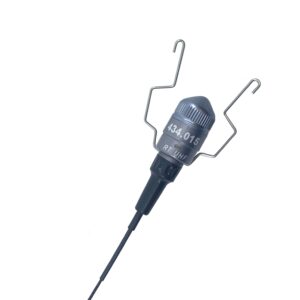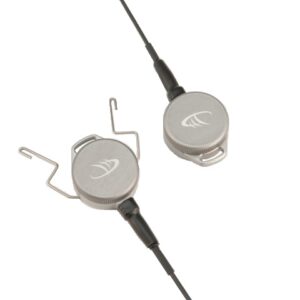High power in a tiny package. And built to last.
The lightweight, high-power transmitters from Marshall Radio have evolved both inside and out for over two decades now. While you can immediately see and feel the premium design on the outside, that same attention to detail is also given to the circuit and components found on the inside. Marshall Radio reinvented falconry transmitters with more than just a few incremental changes. We’ve introduced new breakthrough designs that changed what we all expect from falconry transmitters these days. They are transmitters that are a pleasure to own and use.
On the outside, tiny laser-engraved cases reflect our excessive attention to detail and finish. Machining the unibody cases from the toughest aircraft aluminum alloys is costly, but the most precise way to achieve the tight tolerances we’re after while creating a work of intricate smooth sculpture to attach to your bird. Most importantly, it provides the best lightweight and durable protection for what’s inside.
On the inside, Marshall transmitters incorporate the most energy efficient yet powerful circuitry available to falconers anywhere. You can count on practical performance features found nowhere else, such as temperature stable operation, the ability to maintain the same high power output even as the battery drains, the option to individually set custom operational parameters such as speeding up or slowing down the pulse rate, or having us change the frequency on your transmitter at a later date if needed. And all this, neatly packed inside a gorgeous case design, built to take incredible abuse season after season.
Marshall Transmitters were the first to incorporate the convenient and now widely popular Tap-on/Tap-off magnetic control switch, the first to use a real time low-battery indicator and fuel gauge with the double-beep Low-battery sensor to warn you when there are only three days of run-time left, and the first transmitters to implement the Lost Bird Mode that automatically slows the pulse rate and narrows the pulse width to conserve power when it has not been turned off for 24 straight hours. They still are the only designs that can operate in extreme low temperatures where battery voltage can drop down to a trickle that simply shuts down other transmitters.
The transmitter models detailed below each have a different intended use. You quickly see that the transmitter’s shape and size lends itself best to one of the four main mounting methods. The Transmitters at a Glance table highlights key specifications in comparison to each other. Roll over the image of the transmitter you’d like to learn more about and click to drill down for more detail, Q&A, as well as an Image Gallery for that model.
You might give further thought about the mounting method you use, by reading through the information summarized for you Mounting Methods
Showing all 6 resultsSorted by price: high to low
-

Turbo-GPS Transmitter
Starting At: £700.00 Select options This product has multiple variants. The options may be chosen on the product page -

RT XP UHF Transmitter
Starting At: £375.00 Select options This product has multiple variants. The options may be chosen on the product page -

Micro Transmitter
Starting At: £325.00 Select options This product has multiple variants. The options may be chosen on the product page -

RT VHF
Starting At: £295.00 Select options This product has multiple variants. The options may be chosen on the product page -

Scout VHF Transmitter
Starting At: £205.00 Select options This product has multiple variants. The options may be chosen on the product page -

Scout UHF Transmitter
Starting At: £205.00 Select options This product has multiple variants. The options may be chosen on the product page
